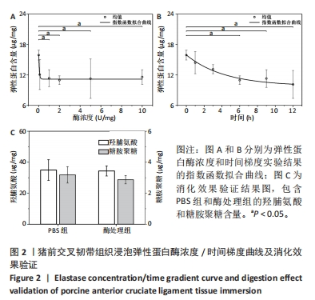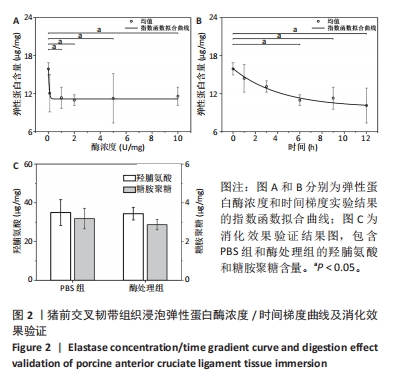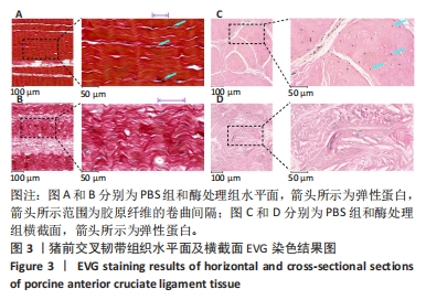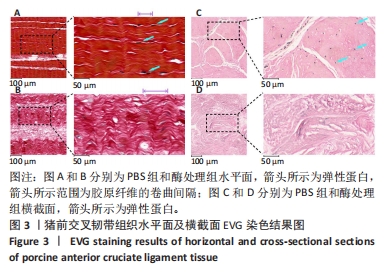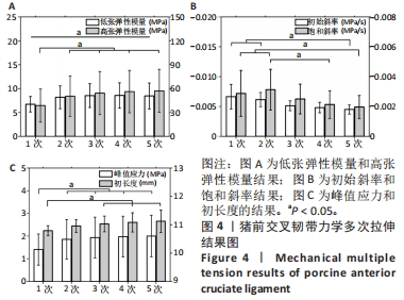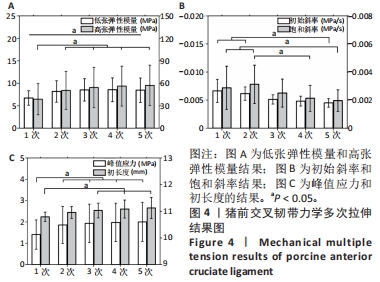[1] ASTUR DC, MARGATO GF, ZOBIOLE A, et al. The incidence of anterior cruciate ligament injury in youth and male soccer athletes: an evaluation of 17,108 players over two consecutive seasons with an age-based sub-analysis. Knee Surg Sports Traumatol Arthrosc. 2023;31(7):2556-2562.
[2] SAYAMPANATHAN AA, HOWE BK, BIN ABD RAZAK HR, et al. Epidemiology of surgically managed anterior cruciate ligament ruptures in a sports surgery practice.J Orthop Surg (Hong Kong). 2017;25(1):2309499016684289.
[3] SANDERS TL, MARADIT KREMERS H, BRYAN AJ, et al. Incidence of Anterior Cruciate Ligament Tears and Reconstruction: A 21-Year Population-Based Study. Am J Sports Med. 2016;44(6):1502-1507.
[4] BHUSAL S, DOTEL U, KATILA SK, et al. Anterior Cruciate Ligament Injury and its Rehabilitation in Nepal. JNMA J Nepal Med Assoc. 2021;59(239):730-733.
[5] HOOGESLAG RAG, BROUWER RW, BOER BC, et al. Acute Anterior Cruciate Ligament Rupture: Repair or Reconstruction? Two-Year Results of a Randomized Controlled Clinical Trial. Am J Sports Med. 2019;47(3):567-577.
[6] WANG LJ, ZENG N, YAN ZP, et al. Post-traumatic osteoarthritis following ACL injury. Arthritis Res Ther. 2020;22(1):57.
[7] BEARD DJ, DAVIES L, COOK JA, et al. Rehabilitation versus surgical reconstruction for non-acute anterior cruciate ligament injury (ACL SNNAP): a pragmatic randomised controlled trial. Lancet. 2022;400(10352):605-615.
[8] PATERNO MV, THOMAS S, VANETTEN KT, et al. Confidence, ability to meet return to sport criteria, and second ACL injury risk associations after ACL‐reconstruction.J Orthop Res. 2022;40(1):182-190.
[9] HONG IS, PIERPOINT LA, HELLWINKEL JE, et al. Clinical Outcomes After ACL Reconstruction in Soccer (Football, Futbol) Players: A Systematic Review and Meta-Analysis. Sports Health. 2023;19417381231160167.
[10] 高余,邓亚鹏,刘鹏,等.前交叉韧带损伤治疗的研究进展[J].华南国防医学杂志,2021,35(6):469-473.
[11] HASSEBROCK JD, GULBRANDSEN MT, ASPREY WL, et al. Knee Ligament Anatomy and Biomechanics. Sports Med Arthrosc Rev. 2020;28(3):80-86.
[12] FLEMING BC. Fifty Years of ACL Biomechanics: What’s Next?. Am J Sports Med. 2022;50(14):3745-3748.
[13] GEORGIEV GP, KOTOV G, ILIEV A, et al. A comparative study of the epiligament of the medial collateral and the anterior cruciate ligament in the human knee. Immunohistochemical analysis of collagen type I and V and procollagen type III.Ann Anat. 2019;224:88-96.
[14] FERRETTI M, LEVICOFF EA, MACPHERSON TA, et al. The Fetal Anterior Cruciate Ligament: An Anatomic and Histologic Study. Arthroscopy. 2007;23(3):278-283.
[15] OSTADI MOGHADDAM A, ARSHEE MR, LIN Z, et al. An indentation-based framework for probing the glycosaminoglycan-mediated interactions of collagen fibrils. J Mech Behav Biomed Mater. 2023;140:105726.
[16] TORNIAINEN J, RISTANIEMI A, SARIN JK, et al. Near infrared spectroscopic evaluation of biochemical and crimp properties of knee joint ligaments and patellar tendon. PLoS One. 2022;17(2):e0263280.
[17] LIN AH, ALLAN AN, ZITNAY JL, et al. Collagen denaturation is initiated upon tissue yield in both positional and energy-storing tendons. Acta Biomater. 2020; 118:153-160.
[18] ZITNAY JL, JUNG GS, LIN AH, et al. Accumulation of collagen molecular unfolding is the mechanism of cyclic fatigue damage and failure in collagenous tissues. Sci Adv. 2020;6(35):eaba2795.
[19] HENNINGER HB, UNDERWOOD CJ, ROMNEY SJ, et al. Effect of elastin digestion on the quasi-static tensile response of medial collateral ligament: ELASTIN MECHANICS IN LIGAMENT.J Orthop Res. 2013;31(8):1226-1233.
[20] NAYA Y, TAKANARI H. Elastin is responsible for the rigidity of the ligament under shear and rotational stress: a mathematical simulation study. J Orthop Surg Res. 2023;18(1):310.
[21] 姜文斌,于胜波,隋鸿锦.前交叉韧带损伤的研究进展[J].中国临床解剖学杂志,2022,40(3):369-371+375.
[22] VOELKER A, SCHROETER F, STEINKE H, et al. Degeneration of the lumbar spine and its relation to the expression of collagen and elastin in facet joint capsules and ligament flavum.Acta Orthop Traumatol Turc. 2022;56(3):210-216.
[23] LIN CJ, COCCIOLONE AJ, WAGENSEIL JE. Elastin, arterial mechanics, and stenosis. Am J Physiol Cell Physiol. 2022;322(5):C875-C886.
[24] 刘晓云, 邓羽平, 李飞飞, 等. 髌腱弹性蛋白降解对其准静态拉伸力学性能的影响[J]. 中国组织工程研究,2023,27(18):2831-2836.
[25] ROSS CJ, LAURENCE DW, ECHOLS AL, et al. Effects of enzyme-based removal of collagen and elastin constituents on the biaxial mechanical responses of porcine atrioventricular heart valve anterior leaflets.Acta Biomater. 2021;135:425-440.
[26] YAMAUCHI S, ISHIBASHI K, SASAKI E, et al. Failure load of the femoral insertion site of the anterior cruciate ligament in a porcine model: comparison of different portions and knee flexion angles. J Orthop Surg Res. 2021;16(1):526.
[27] 章才华. 低频超声促进前交叉韧带重建腱骨愈合的动物实验研究[D]. 杭州:浙江大学,2023.
[28] PANG X, WU J, ALLISON GT, et al. Three dimensional microstructural network of elastin, collagen, and cells in Achilles tendons.J Orthop Res. 2017;35(6):1203-1214.
[29] RISTANIEMI A, TORNIAINEN J, STENROTH L, et al. Comparison of water, hydroxyproline, uronic acid and elastin contents of bovine knee ligaments and patellar tendon and their relationships with biomechanical properties. J Mech Behav Biomed Mater. 2020;104:103639.
[30] EEKHOFF JD, ABRAHAM JA, SCHOTT HR, et al. Fascicular elastin within tendon contributes to the magnitude and modulus gradient of the elastic stress response across tendon type and species. Acta Biomater. 2023;163:91-105.
[31] HENNINGER HB, VALDEZ WR, SCOTT SA, et al. Elastin governs the mechanical response of medial collateral ligament under shear and transverse tensile loading. Acta Biomater. 2015;25:304-312.
[32] GODINHO MS, THORPE CT, GREENWALD SE, et al. Elastase treatment of tendon specifically impacts the mechanical properties of the interfascicular matrix. Acta Biomater. 2021;123:187-196.
[33] BLOOM ET, LEE AH, ELLIOTT DM. Tendon Multiscale Structure, Mechanics, and Damage Are Affected by Osmolarity of Bath Solution. Ann Biomed Eng. 2021; 49(3):1058-1068.
[34] KRÄMER M, KOLLERT MR, BRISSON NM, et al. Immersion of Achilles tendon in phosphate‐buffered saline influences T 1 and T 2 * relaxation times: An ex vivo study. NMR Biomed. 2020;33(6):e4288.
[35] HANSEN KA, WEISS JA, BARTON JK. Recruitment of Tendon Crimp With Applied Tensile Strain. J Biomech Eng. 2002;124(1):72-77.
[36] LANIR Y.A Microstructure Model for the Rheology of Mammalian Tendon.J Biomech Eng. 1980;102(4):332-339.
[37] XEROGEANES JW, FOX RJ, TAKEDA Y, et al. A Functional Comparison of Animal Anterior Cruciate Ligament Models to the Human Anterior Cruciate Ligament. Ann Biomed Eng. 1998;26(3):345-352.
[38] PROFFEN BL, MCELFRESH M, FLEMING BC, et al. A comparative anatomical study of the human knee and six animal species. Knee. 2012;19(4):493-499.
|


